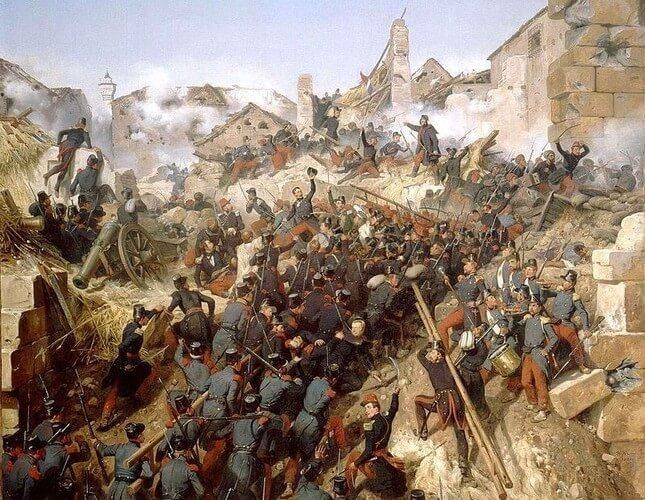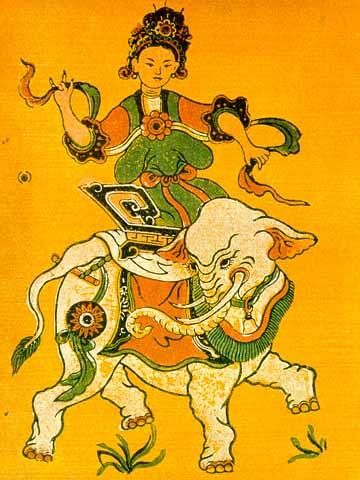Class 10 History Chapter 2 Question Answers - Nationalism in India
Ques 1: Discuss in detail the resistance faced by the French from schools in occupied Vietnam.
OR
How did the battle against French colonialism become a part of the battle for independence in Vietnam? Explain.
Ans: Most of the students and teachers in the Vietnamese schools opened by the French were not following the given syllabus. They chose to openly oppose or silently resist what the French were trying to impose on the Vietnamese young minds. At the lower level of classes the French could not control the teachers at all because they taught in Vietnamese. This helped them to criticise and modify what the French textbooks put forward.

Soon schools were like political and cultural battlegrounds in which the French tried to control education. They aimed at changing the values, norms and perceptions of the people so that they viewed French culture and civilisation with awe and the Vietnamese civilisation as inferior. Many Vietnamese thinkers mourned the loss of territory, culture and customs.
Ques 2: How nationalism in Vietnam emerged through the efforts of different sections of the society to fight against the French? Explain.
Ans: (i) Every section of society in Vietnam promoted nationalism in its own way. Students started Go East Movement and established associations in Japan to fight the French colonial rule. They took inspiration from Sun Yat Sen’s revolution in China. By 1920s the students were forming various political parties, such as ‘Party of Young Anan’ and publishing nationalist journals like the “The Annanese Student”. Teachers in school resisted the imposition of French culture on them and quickly modified the texts and taught what they wanted. They led a battle against French domination as a part of longer battle against colonialism.

(ii) Even in everyday life people resisted the French. ‘The Rat Catchers’ added their help to nationalism in their own way. When the plague struck Hanoi’s French Section, the authorities started a ‘rat hunt’ in which they rewarded Vietnamese workers when they produced a rat tail. The rat catchers cut off only the tail of the rats and then released the rats. The French were forced to stop the rewards. This rat menace reveals the limits of French power and the actions of rat catchers reveal the numerous small ways colonialism was fought in everyday life.
(iii) In the 18th century, religious movements were hostile to the French domination. The Hao Movement of 1939 was one such movement led by Huynh Phu So. The French called him insane and suppressed the movement but it also contributed to the rise of nationalism.
(iv) Politically, the resistance to French domination was led by Phan Boi Chau who formed a revolutionary society (Duy Tan Hoi) in 1903 and Phan Chu Trinh. The former wanted restoration of monarchy and the latter, a republic. In 1930, Ho Chi Minh brought the socialist groups together and formed the Vietnamese Communist Party. Under his leadership the country won freedom.
Ques 3: What was the role of women in the anti-imperialist struggle in Vietnam? Compare this with the role of women in the national struggle in India. [Textual Question]
Ans: We have read that Vietnamese women contributed to the resistance movement as workers as well as warriors. They were employed as porters carrying 25 kg of food and war materials on their delicate backs.
They served as nurses to the wounded. They even went on to dig tunnels so that the imperialist attacks could be thwarted by hiding Vietnamese army in the tunnels. They worked bravely to neutralise thousands of bombs and shooting down the enemy planes. Nearly 1.5 million women workers were in the army. They helped in keeping strategic roads clear and even guarded the key points. It is difficult to imagine the state of the Vietnamese freedom struggle with the active role of Vietnamese women.
Women in Vietnam showed same valour and patriotism as Indian women had shown during India’s freedom struggle. Aruna Asaf Ali, Vijayalakshmi Pandit, Indira Gandhi, Rani Lakshmibai— all had contributed in their own way to the freedom struggle of India. In Nagaland, 13-years-old Rani Gaidiliu stood up in revolt against the British forces. She was caught and imprisoned for life in 1932. She spent the years 1932 to 1947 in dark cells of various jails in Assam. She was freed in 1947 when India gained freedom.
Ques 4: (i) What is this cartoon making fun of ?
(ii) Which school in Vietnam encouraged ‘Western Style’ education ?
(iii) How did the the teachers and students resist he imposition of modernity on them ?
(iv) Name a party formed by students to fight against colonialism and a name the nationalist journal published by them.
Ans: (i) It is making fun of the local Vietnamese who has become Westernised.
(ii) The Tonkin Free School started in 1907.
(iii) The teachers and students did not blindly follow the curriculum which encouraged Western ideas– e.g., short haircut. The Vietnamese resisted– sometimes silently, sometimes openly. The teachers quietly modified the text while teaching and criticised what was stated.
(iv) The Party of Young Annan in 1920. The journal published was Annanese Students.
Ques 5: (i) Whose portrait has been painted in this picture?
(ii) Give a brief history of this person.
(iii) Why did she become a holy person?
(iv) What does this picture tell you about role of women in society?

Ans: (i) The picture is of Trieu Au.
(ii) She lived in the 3rd century CE. She became an orphan in childhood and grew up with her brother. She left her home, went into the jungles and built up an army, which fought against the Chinese.
(iii) When she lost the battle, she drowned herself. She became a martyr. People venerated her and were inspired by her actions.
(iv) It shows a change of role played by women in society. Earlier the women had no role to play in public life. They had very little freedom and were not allowed to decide their future. The nationalist movement changed it. They were now praised as warriors and heroic women who became symbols of the nationalist movement. Even rebel women of the past were praised.
|
666 docs
|
FAQs on Class 10 History Chapter 2 Question Answers - Nationalism in India
| 1. What were the main reasons behind the Nationalist Movement in Indo-China? |  |
| 2. Who were the key leaders of the Nationalist Movement in Indo-China? |  |
| 3. What were the methods adopted by the Nationalist Movement in Indo-China to achieve their goals? |  |
| 4. How did the Nationalist Movement in Indo-China impact the region's political landscape? |  |
| 5. What was the role of the Communist Party in the Nationalist Movement in Indo-China? |  |

















